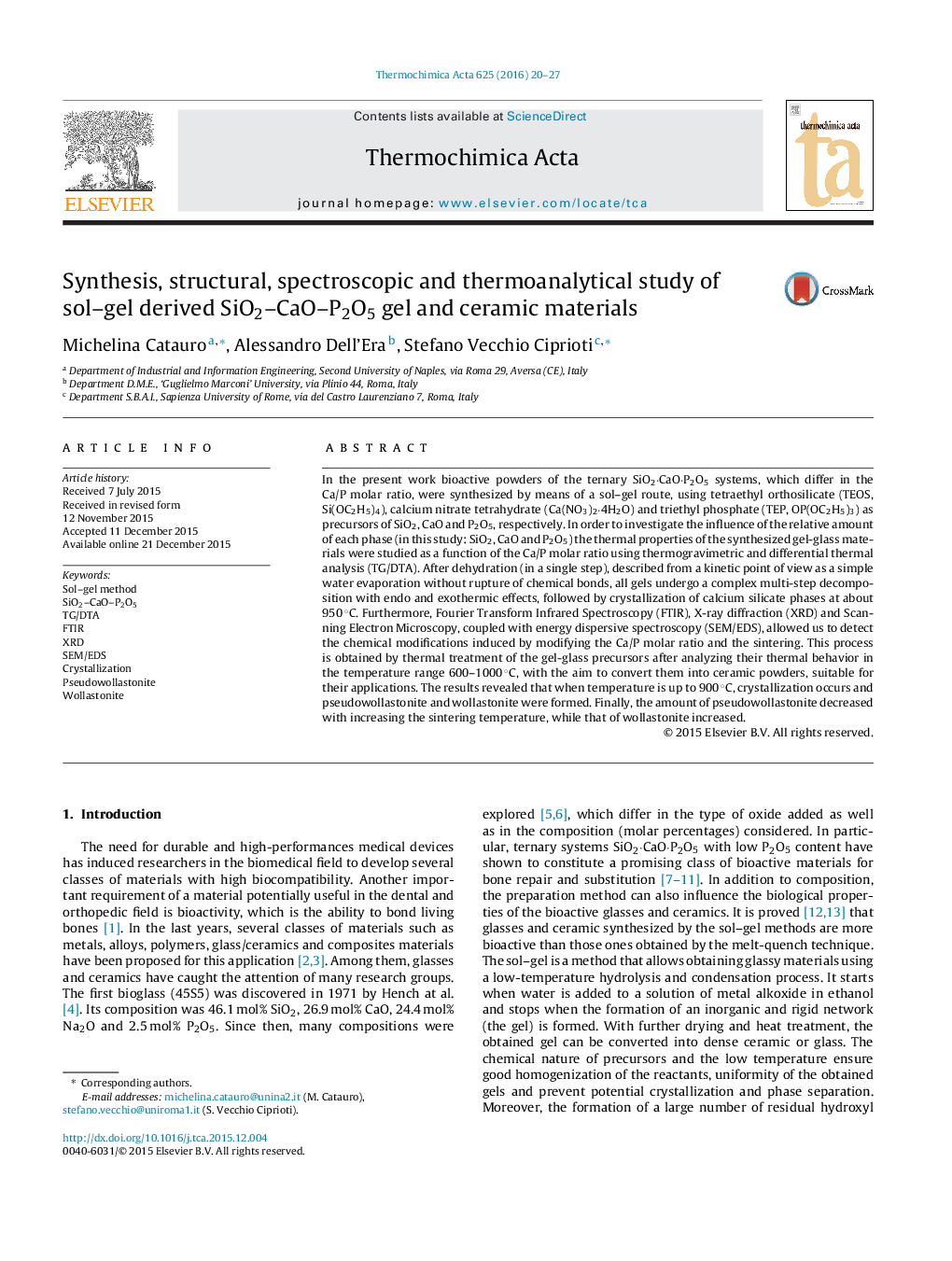| Article ID | Journal | Published Year | Pages | File Type |
|---|---|---|---|---|
| 672825 | Thermochimica Acta | 2016 | 8 Pages |
Abstract
In the present work bioactive powders of the ternary SiO2·CaO·P2O5 systems, which differ in the Ca/P molar ratio, were synthesized by means of a sol-gel route, using tetraethyl orthosilicate (TEOS, Si(OC2H5)4), calcium nitrate tetrahydrate (Ca(NO3)2·4H2O) and triethyl phosphate (TEP, OP(OC2H5)3) as precursors of SiO2, CaO and P2O5, respectively. In order to investigate the influence of the relative amount of each phase (in this study: SiO2, CaO and P2O5) the thermal properties of the synthesized gel-glass materials were studied as a function of the Ca/P molar ratio using thermogravimetric and differential thermal analysis (TG/DTA). After dehydration (in a single step), described from a kinetic point of view as a simple water evaporation without rupture of chemical bonds, all gels undergo a complex multi-step decomposition with endo and exothermic effects, followed by crystallization of calcium silicate phases at about 950 °C. Furthermore, Fourier Transform Infrared Spectroscopy (FTIR), X-ray diffraction (XRD) and Scanning Electron Microscopy, coupled with energy dispersive spectroscopy (SEM/EDS), allowed us to detect the chemical modifications induced by modifying the Ca/P molar ratio and the sintering. This process is obtained by thermal treatment of the gel-glass precursors after analyzing their thermal behavior in the temperature range 600-1000 °C, with the aim to convert them into ceramic powders, suitable for their applications. The results revealed that when temperature is up to 900 °C, crystallization occurs and pseudowollastonite and wollastonite were formed. Finally, the amount of pseudowollastonite decreased with increasing the sintering temperature, while that of wollastonite increased.
Related Topics
Physical Sciences and Engineering
Chemical Engineering
Fluid Flow and Transfer Processes
Authors
Michelina Catauro, Alessandro Dell'Era, Stefano Vecchio Ciprioti,
